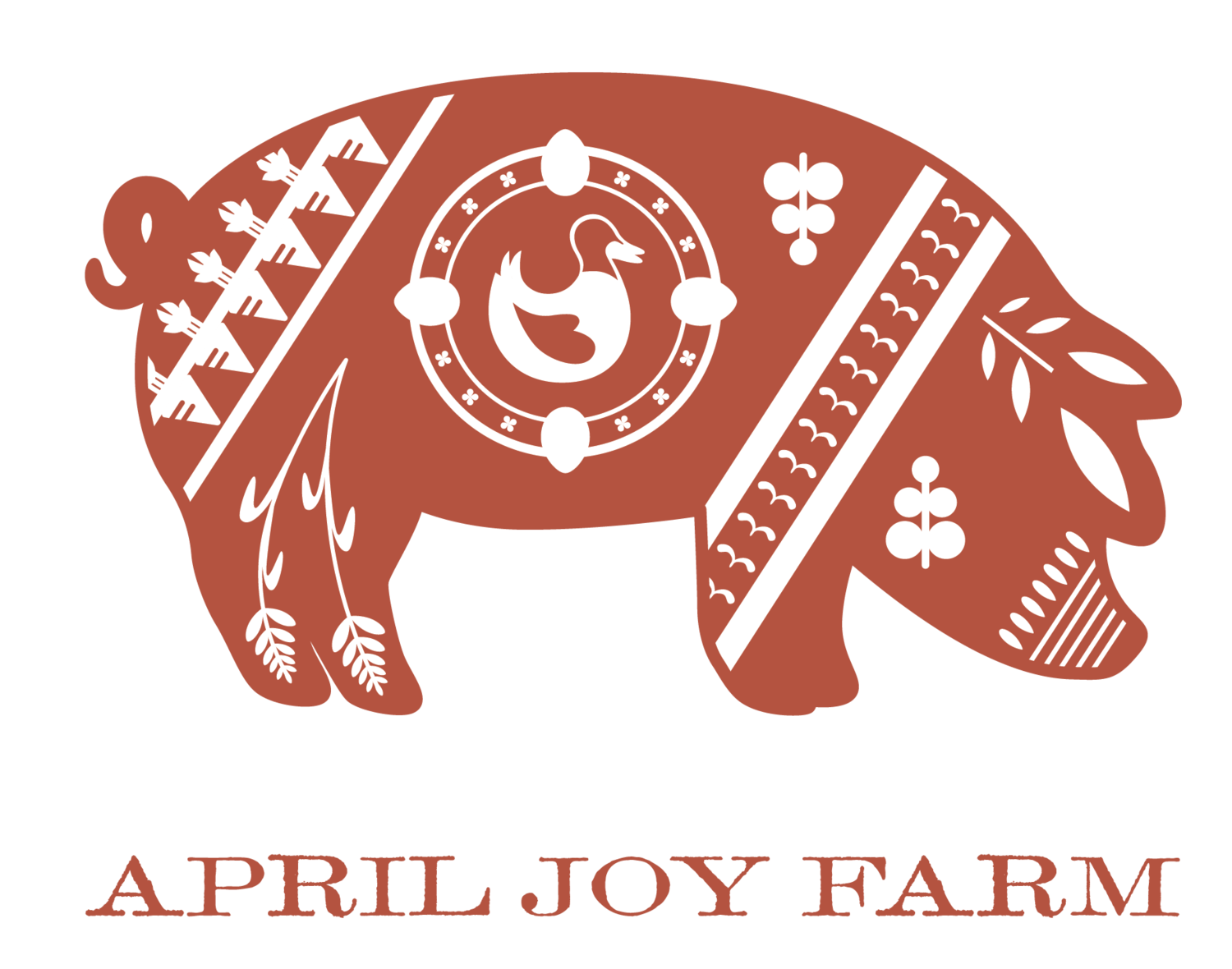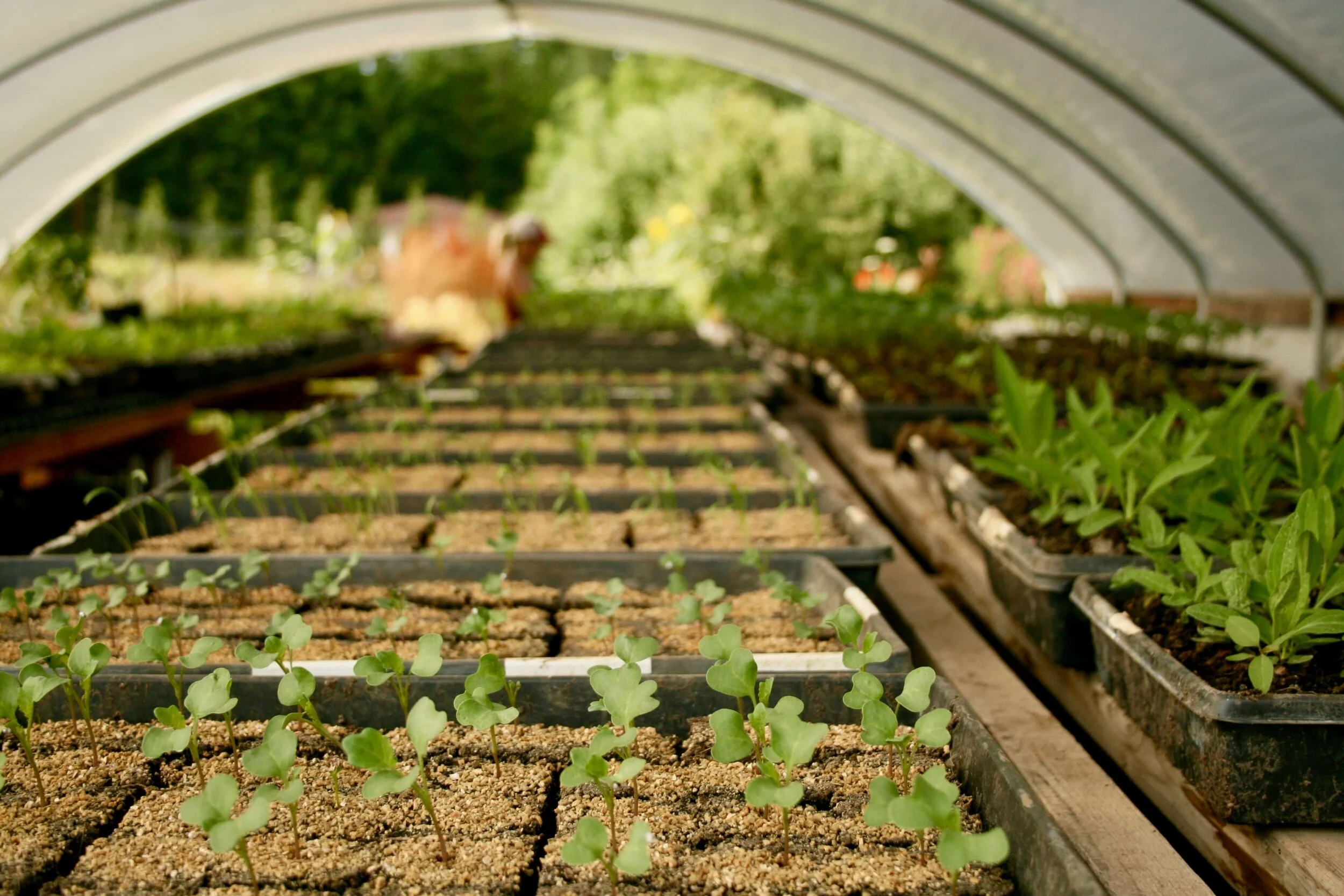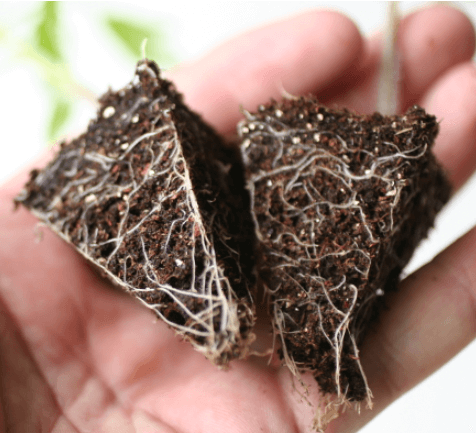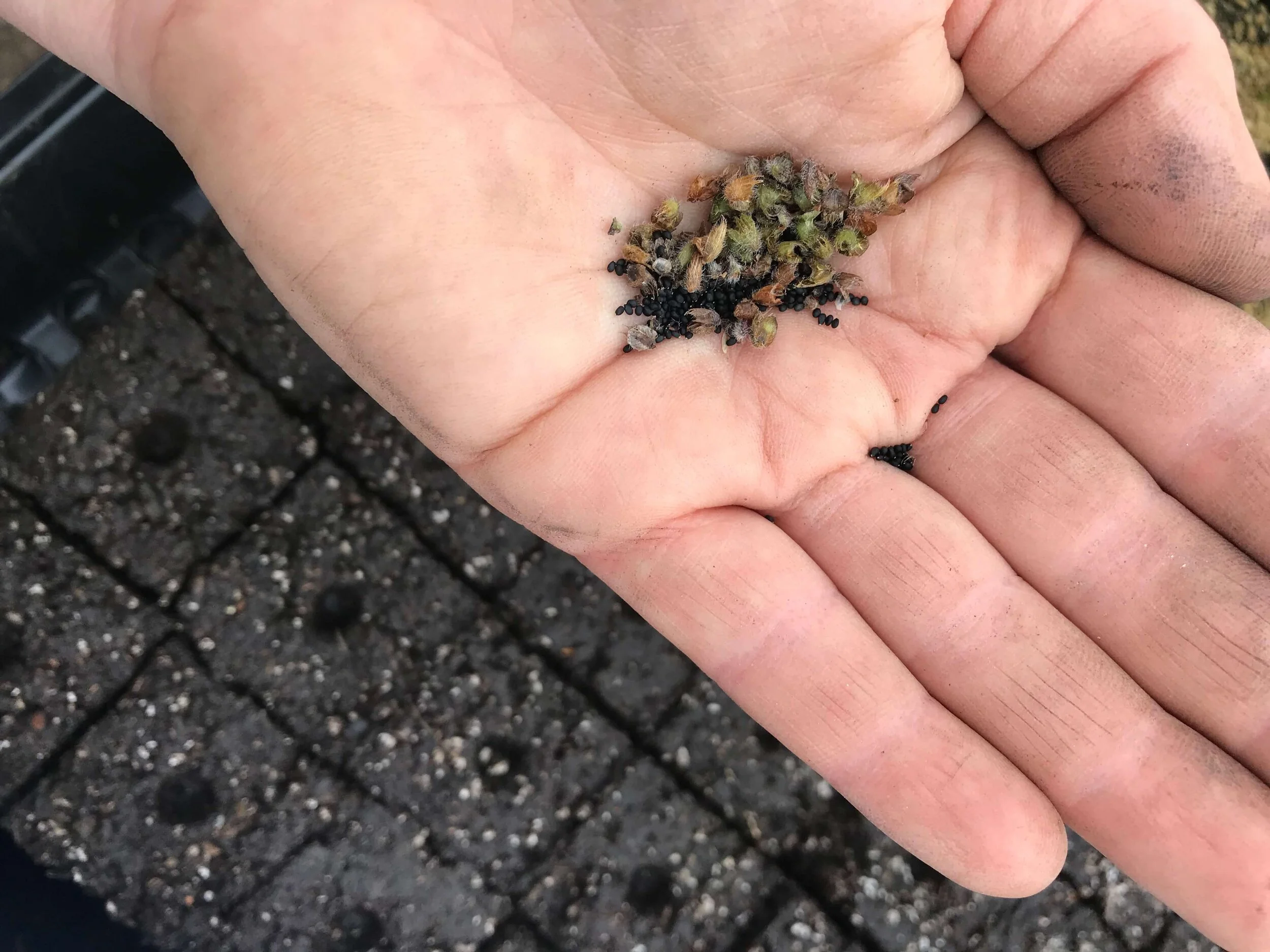Deep Underground Magic
In the past two essays, I’ve written about why we start our vegetable starts from seed and go the extra mile to make from scratch our own potting mix. As I noted, starting and raising transplants is inherently laborious, so much so, that many growers find all sorts of ways to cut corners. This week I discuss one more critical part of our seed starting process that helps explain how working harder and smarter aren’t mutually exclusive at April Joy Farm.
**
A common way many growers expedite the labor intensive process of raising their own transplants is by using seedling trays. Typically, these are black plastic that has been molded into a set number of individual pots. A person can simply pour their purchased potting mix into the tray, filling a large number of pots all at once and then drop seeds into each individual square.
If you’ve ever looked at these trays you’ll notice that in cross section, the pots taper to a narrower bottom width. This is another way to cut corners. Filling such a tray of pots takes less material and thus saves the amount of potting mix needed to be purchased.
We never start our seeds into these types of pots precisely because of this design flaw. I call it a design flaw because those pots were clearly not designed by any plant. How do I know? Visualize how a plant grows below ground. At the earliest growth stages, roots branch out and often spread widely –which is exactly the type of growth that is restricted by these black plastic cells. This causes stress to the plant, which means it is not likely to be as robust or resilient in the field. Of the many things I’ve learned from farm life, one very important lesson is this: It’s crucial to pay attention to what is underground – what you can’t see—because more often than not, understanding what’s hidden will take you straight to the heart of the matter.
Manufacturers of these trays actually identify the different styles (number of plants per flat you can seed) by the number of ‘cells’. Sorry, but I don’t want any of my plants growing up in anything resembling a jail. Language aside, there are other good reasons we avoid using them at April Joy Farm. The trays are flimsy and thus basically designed to be disposable. Talk about a lot of garbage! Furthermore, it’s very easy to damage the roots of the plants when extricating them from these cells, which makes for a very tedious transplanting experience.
By contrast, the annual produce in your CSA shares are grown using a labor and material intensive process called soil blocking.* We mix up batches of our blocking mix from scratch (see last week’s essay for details), then we use a special tool called a soil blocker to press out perfectly rectangular blocks into an open reusable tray. There is no plastic barrier between each of the blocks, but rather, they are grown in community so each flat can share both water and nutrients. We make different blocks for different sized seeds. For instance, lettuces are sown into 1 ½” blocks, tomatoes, cabbage and kohlrabi start their lives in 2” blocks, pumpkins and cucumbers in 3” blocks.
Soil blocking is a lot of work upfront. I estimate it takes easily twice as much time to plant the same amount of seeds. But for us, the quality of the work is far superior partly because making blocks is more enjoyable than filling endless cells and partly because blocks feel like a more natural environment in which our seeds can wake up into the world. We certainly feel better about the environmental footprint of our blocking system. The extra effort we expend making soil blocks more than pays for itself in healthy, robust transplants, and the efficiencies we gain on transplanting days (no wrestling with crumpled narrow plastic pots that damage plant roots) makes for highly satisfying work.
Some growers think they are saving time, money and effort by cutting corners with pre-bagged seed mixes and plastic seed-starting cell trays. When I mention my methods for sowing our seedlings, often the response I hear is that there’s not enough time. And while I certainly can’t tell anyone else how to run their farm, there is one other way I justify all the additional labor and expense of our seedling program. It’s another lesson I’ve learned from farming. The little actions that make up your days? They really do add up.
Over the course of one year, just through soil blocks, we apply the equivalent of 2,800 pounds of compost. That’s 1.3 tons of material we don’t need a tractor, labor, or fossil fuels to apply, not to mention the soil compaction we avoid by less tractors tires crossing our fields. Those who balk at our ‘inherently laborious’ methods likely spend hours or days hauling and applying amendments to their fields. We don’t, because the amendments that we want to incorporate into our soil are already contained in those miraculous little blocks.
For some growers, seeding flat after flat, year after year becomes a mundane chore that they just want to get through as fast as possible. But for me, thirteen years and thousands upon thousands of seeds into my farming career, I remain in total awe. For me, each sowing is a chance to remember the promise I made to myself before starting this farm: If I can’t do it with reverence, integrity, and love, it's time to do something else. Every block I make, every seed that passes through my hands is a hope, a heartfelt wish, and an opportunity to give thanks for the astounding miracles surrounding me. Germination is the first manifestation of plenitude.
I want my labors of love to be the first manifestation of community, an inaugural celebration of nature’s deep underground magic that feeds us all. ~AJ
*Last week I made a clear distinction between potting mix and soil, so you might be surprised that I use the term soil when referring to our human-made blocking mix. To clarify, soil from our field is actually a critical ingredient of our blocking mix... so it truly is a soil mix!
“The function of freedom is to free someone else.”



